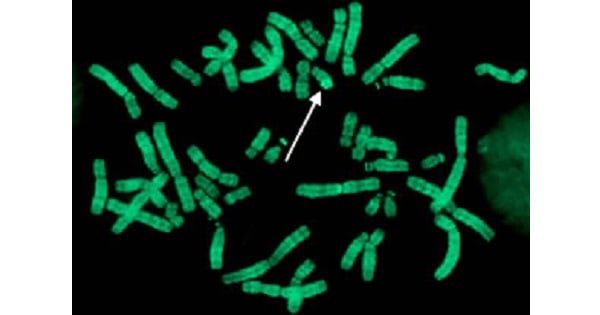MOLECULAR CYTOGENETIC TECHNIQUE- (FISH)
- FISH is a cytogenetic technique that can be used to detect the presence or absence ofspecific DNA sequences (specific gene locus).
- fluorescent probes bind to only those parts of the chromosome with which they show a high degree of sequence similarity.like lncRNA, mRNA, or miRNA of interest
- FISH can be used for rapid identification of chromosome during interphase.
- FISH can be used in metaphase cells to detect specific microdeletions beyond the resolution of routine qtogenetics or identify extra material of unknown origin.
- it determines if a chromosome has a simple deletion or is involved in a subtle or complex rearrangement. In addition, metaphase FISH can detect some of the specific chromosome rearrangements seen in certain cancers.
- This technique can be used on formalin-fixed paraffin embedded (FFPE) tissue, frozen tissues, fresh tissues, cells and circulating tumor cells.

Methodology:
- (FISH) analysis is performed by denaturing the double-stranded DNA in the fixed chromosomes on a microscope slide.
- Two fluorescently labeled DNA probes are used in combination to analyze each location.
- The first probe serves as a control and hybridizes with DNA on the target chromosome, The second probe hybridizes to a target location on the individual’s DNA sequence.
- When a deletion is present, the second probe will not hybridize and no fluorescence will be seen.
- A duplication will result in two fluorescent spots with the test probe.
Advantages of FISH
- FISH permits determination of the number and location of specific DNA sequences in human cells.
- FISH can be performed on metaphase chromosomes,as with G-banding, but can also be performed on cells not actively progressing through mitosis
- FISH performed on nondividing cells is referred to as interphase or nuclear FISH.
Disadvantages of FISH
- FISH requires a preselection of an informative molecular probe prior to analysis, So a prior knowledge of the anomaly is needed.
Uses of FISH:
- Detection of numeric abnormalities of chromosomes (aneuploidy). The demonstration of subtle microdeletions
- Detection of complex translocations not detectable by routine karyotyping
- For analysis of gene amplification e.g. HER2/NEU in breast cancer or N-MYC amplification in neuroblastomas
- For mapping newly isolated genesa of interest to their chromosomal loci
Chromosome Painting:
- Is an extension of FISH, Probes are prepared for entire chromosomes.
- The number of chromosomes that can be detected simultaneouslyby chromosome painting is limited by the availability of fluorescent dyes.
Exam Important
- FISH can be used for rapid identification of chromosome during interphase.
- FISH can be used in metaphase cells to detect specific microdeletions beyond the resolution of routine qtogenetics or identify extra material of unknown origin.
- it determines if a chromosome has a simple deletion or is involved in a subtle or complex rearrangement. In addition, metaphase FISH can detect some of the specific chromosome rearrangements seen in certain cancers.
- It helps in Detection of numeric abnormalities of chromosomes (aneuploidy). The demonstration of subtle microdeletions
Don’t Forget to Solve all the previous Year Question asked on MOLECULAR CYTOGENETIC TECHNIQUE- (FISH)

